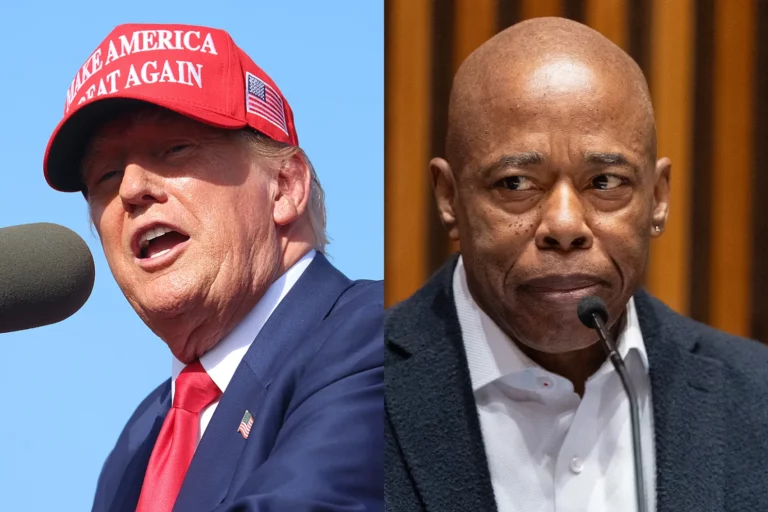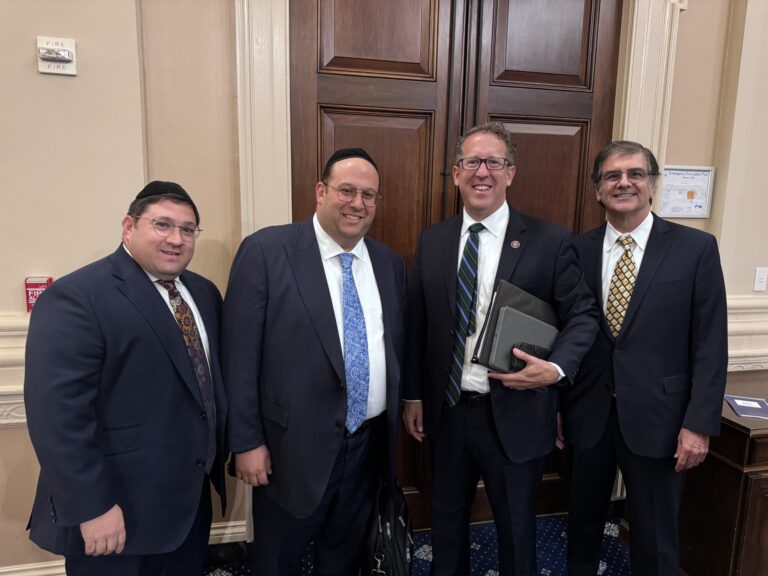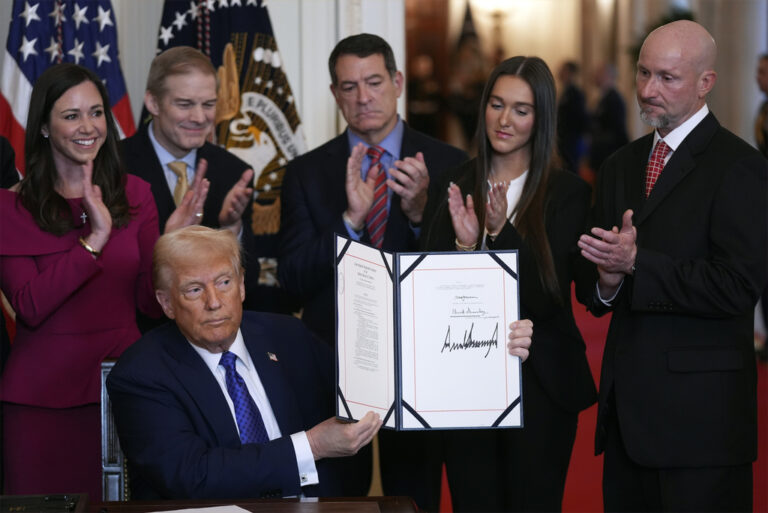The Trump administration on Thursday announced plans to renegotiate the North American Free Trade Agreement with Mexico and Canada — a move that could shake up business across the continent.
Here’s what’s at stake:
———
WHAT IS NAFTA?
Negotiated by President George H.W. Bush and signed into law by President Bill Clinton, NAFTA took effect on Jan. 1, 1994. The trade pact eliminated tariffs — taxes on imports — and other trade barriers among the United States, Canada and Mexico. The impact on some vulnerable U.S. industries was delayed. Tariffs on textiles and clothing, for instance, were phased out only gradually. So were many trade barriers in the auto industry.
Supporters said the agreement would promote trade and create jobs across a North American single market. It would be, in other words, a victory for everyone. Critics countered that low-wage competition from Mexico would wipe out American factory jobs. In 1992, U.S. presidential candidate Ross Perot famously predicted “a giant sucking sound” as American jobs migrated south across the border.
———
SO WHAT ACTUALLY DID HAPPEN?
Trade among NAFTA countries exploded. But so did America’s trade deficit with Mexico.
In 1993, the year before NAFTA took effect, the United States had sold Mexico $41.6 billion in goods and bought $39.9 billion for a trade surplus of $1.7 billion. In 2016, the U.S. had exported $231 billion in goods to Mexico (a 455 percent increase) and imported $294.2 billion (up 637 percent). That created a trade deficit in goods of more than $63 billion.
Trump has invoked the trade gap to argue that naive American policymakers had been out-negotiated by their Mexican counterparts. But the trade gap has widened partly because American consumers are eager to buy relatively low-priced cars and other goods from Mexico.
NAFTA’s impact on the economy was more modest than partisans on either side of the debate had expected. In part, that’s because trade represents a surprisingly small portion of the U.S. economy — 28 per cent in 2015, according to the World Bank, one of the lowest shares in the world. And trade with Mexico is a smaller portion still.
The Congressional Research Service has concluded that the impact of NAFTA on the U.S. economy “has been relatively small.” The Peterson Institute for International Economics, a pro-free trade think-tank in Washington, estimates that the U.S. loses about 203,000 jobs and gains 188,000 annually” on account of two-way trade with Mexico.” That’s a net loss of 15,000 jobs a year — a mere rounding error in a country with 145 million jobs.
———
WHAT DOES TRUMP WANT TO DO?
The president has vowed to negotiate a better NAFTA — or to walk away from the agreement if he can’t get one.
On Thursday, U.S. Trade Rep. Robert Lighthizer sent a letter to congressional leaders, starting 90 days of consultations with lawmakers over how to revamp the agreement. After that, talks with Canada and Mexico can begin.
The two-page letter offered few details about what changes the administration would seek in the negotiations.
Gary Hufbauer, senior fellow at the Peterson Institute, says the United States could seek modest “technocratic” changes, including provisions to update NAFTA to reflect technologies that have emerged since the original agreement was negotiated. Or it could take a more aggressive approach, putting pressure on Mexico to reduce the trade gap, perhaps by dropping a value-added tax Mexico slaps on goods coming across the border. (Mexico also imposes the tax on products Mexican companies sell domestically but not on products they export to the United States and other countries.)
After NAFTA, automakers began producing small cars in Mexico and shipping them across the border to the United States. Mexican auto workers still earn less than $10 an hour, allowing manufacturers to keep small car prices low and affordable to U.S. families on a budget.
But U.S. and other companies have built complicated supply chains that span the U.S.-Mexico border.
They worry that their operations will be thrown into disarray by a major NAFTA rewrite — or if Trump follows through on threats to pull out of the deal altogether and impose big tariffs on Mexican imports. Although they build cars in Mexico, U.S. companies also do a big business ($30 billion worth in 2015) shipping auto parts to Mexico.
There also has been some speculation that the United States would seek separate deals with Canada and Mexico, rather than retaining a three-country arrangement. But Mexican Foreign Minister Luis Videgaray on Thursday told reporters that “NAFTA is a trilateral treaty and must have a trilateral nature. That is our position.”
(AP)











